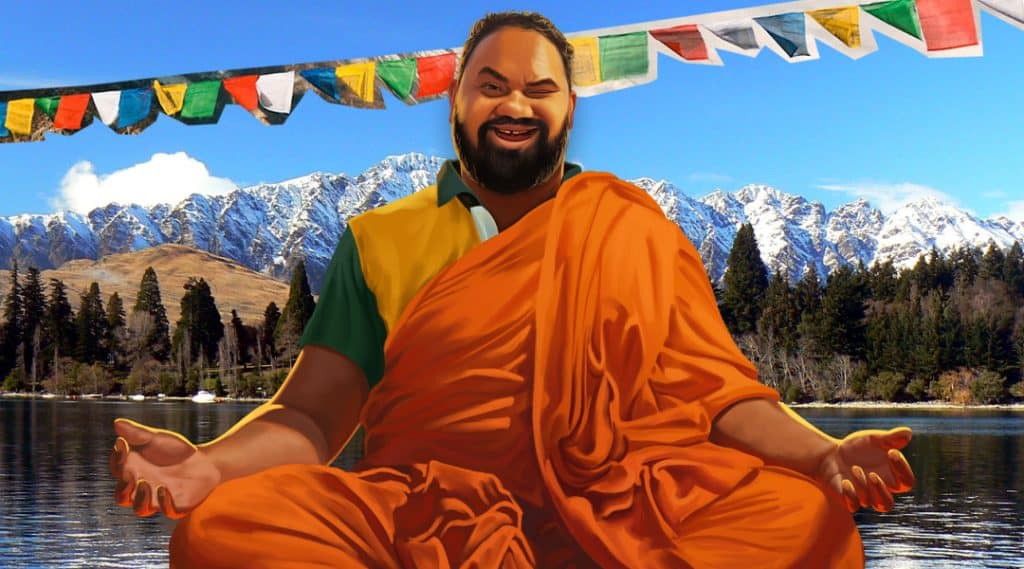
Welcome back to Stage Notes. As we inch closer to opening night for Le comte Ory, we thought it was only fair that we start to share a little more detail about our exciting (and very modern) new take on Rossini’s comic classic.
With that in mind, we managed to convince the wonderful creative duo behind this production – director Simon Phillips and set & costume designer Tracy Grant Lord – to graciously allow us a short while to pick their brains about the specific inspirations behind their all-new staging. Read on for first-ever insights into how this one has come together, and what you can expect to see on the night!
CHANNELLING THE CHATEAU
On its face, the ostentiatious château in which Countess Adèle finds herself sequestered – and which subsequently serves as a central location for the majority of the action in Le comte Ory – may seem like a setting quite far removed from the altogether younger post-colonial architecture of Aotearoa.
But while ours may not be a land of castles, it is a land of bold topography. And as Simon points out, we do have at least one very famous château of our own – or at least a château of sorts.
“I remember we would go for family holidays at the Château Tongariro when I was younger – we didn’t really know what that word meant, but we knew it was this big building at the base of a mountain.”
For Tracy, answering the question of where this season of Le comte Ory should be set meant thinking about the function of class and status in a modern-day New Zealand – how those are attained, but also how they manifest. As it was written, Le comte Ory is a story clearly steeped in feudal-era power dynamics – as Tracy notes, its world is a “privileged, rarified” one.
But in a society where politics and power dynamics tend to be a bit more mundane, what sort of setting can adequately stand in for the literal castle in the clouds?
PLAYING WITH PAROCHIALISM
Bear with us, but in order to answer that question, first we need to do a little more unpacking. Because not only is Le comte Ory a story set squarely in the French countryside (the real province of Touraine, to be precise, though its castle Formoutiers is a work of fiction), it’s also one set squarely in the 13th century, the era of the Crusades.
With our staging being set in the modern day, there was one reasonably large issue to address: a plot point on which the opera essentially entirely hinges now needed, in Simon’s words, to be “solved”.
“The premise [of Le comte Ory] is that a group of knights have gone to fight a crusade, and another group of knights move in. And when I thought about [contemporising that story] and making it a joy to a New Zealand audience, I went *click*: it has to be a sports team.”
When you take a step back, it’s an approach that seems almost glaringly obvious. Our national teams are our flag bearers, our conquerors, our brave champions seeking fame, glory and validation on an international stage. And when they head off on their tours of duty, it’s easy to imagine those left behind seeking solace and companionship together. Thus, our setting starts to come into focus. As Tracy says:
“We knew we needed a situation with a group of women in a very privileged situation. If you couple that with the sports team thing, you immediately go: wives and girlfriends. And where would they be, in this world? That led us to the idea of a wellness retreat. And things just came together from there.”
OPEN TO INTERPRETATION
And so therein lies the rub – or at least a sizeable chunk of it. Our castle is a wellness ‘château’; its women are the significant others of a beloved local sports team; our antagonists their conniving regional rivals.
With the scaffold of this new interpretation set, the opportunities to find new depth and play in new spaces immediately became obvious to our creative team – as Simon puts it, bringing the opera into a contemporary setting has immediately allowed them to “take reality, and put inverted commas around it”. In closing, Tracy reinforces that sentiment:
“There is a level of hyperreality to what we’re doing here, where everything is pushed a bit further, into a more ‘graphic’ mode. Whether it’s the costume or the design, every piece is just a little bit ‘popped’ past realism.”
There’s significantly more to the story, of course – new motivations, new tensions, new opportunities for deceit, deception and disguise – but we don’t want to give away too much just yet! And regardless of what we’re keeping under our hats, we can confidently say that, in bringing Count Ory and his hapless hangers-on into the 21st century, the creative team behind Le comte Ory have created a work that local audiences are sure to absolutely love.
We’ll be in touch again soon, but until then, enjoy an extra special glimpse behind the scenes:
